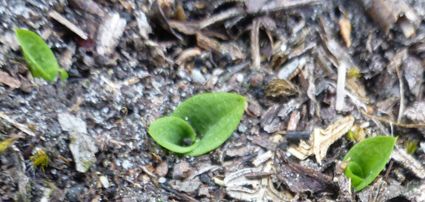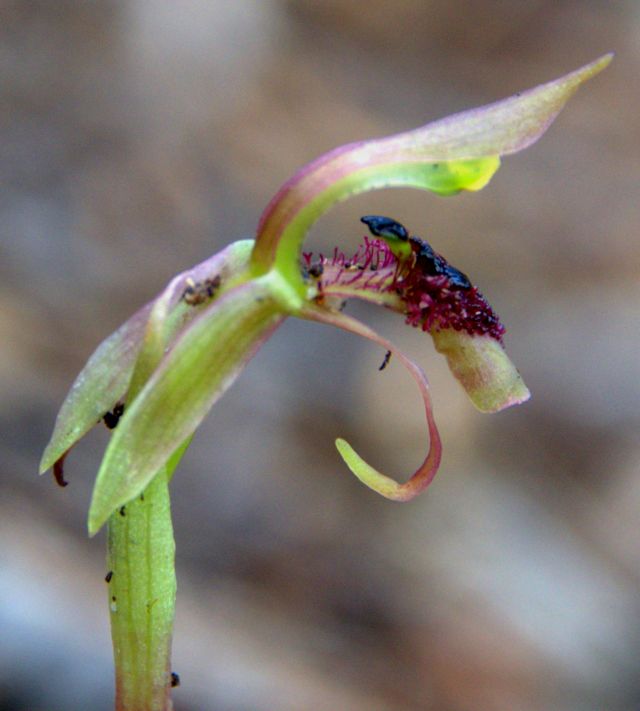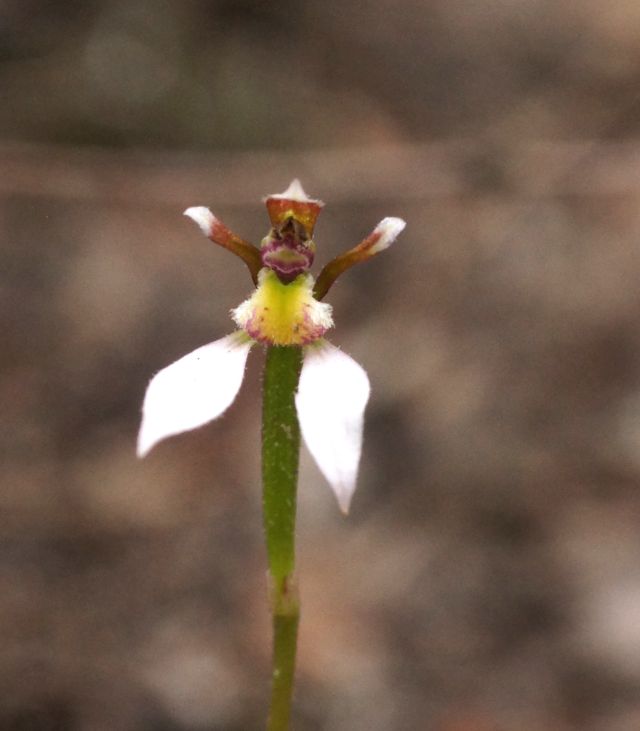As the weather has begun to cool down, and with the recent early autumn gentle rain, we can be quietly optimistic regarding our autumn terrestrial orchids.
Despite the dry conditions in early March, the three species of Midge Orchids Corunastylis sp, that were featured in our March newsletter flowered in quite good numbers.
It was so exciting to see over 20 specimens of the Sharp Midge Corunastylis despectans growing amongst the grasses, sedges and low shrubs in its only known site on No 2 Rd.
Bearded Midge Orchids C. morrisii and Fringed Midge Orchids C. ciliata were both seen on the roadside verge of Forest Road. They do grow in various sites and they may have put up some additional flowering spikes after the recent rains.
Autumn Bird Orchids Chiloglottis reflexa are starting to appear. Their tiny, paired leaves with wavy margins are pushing their way through the soil and ground litter, gradually growing and spreading, with some forming tiny buds.

New leaves appearing
Indeed a few flowering specimens have already been seen on private land near Portreath Rd. This species often forms huge colonies but rarely flowers unless stimulated by hot fires during the previous summer. Flowering is also stimulated by slashing or mowing the vegetation.

The greenish-brown flower is interesting to observe through a hand lens. The labellum is the feature. It is quite narrow but broader at the apex and is covered by dense, dark calli with one large stalked gland at the base. The lateral sepals are curved beneath the labellum and the petals are reflexed against the ovary, thus giving the name of C. reflexa.

Another orchid that has begun flowering is the Parson’s Bands Eriochilus cucullatus.

Parson’s Bands
This is an eye-catching orchid, as the white or pink lateral sepals are very prominent on the flowers that are scattered amongst the grasses where the orchid grows. The flower stem usually grows 15 to 20cm high and may bear one or more flowers. The single leaf often does not appear until the orchid has finished flowering and then stays until spring. The fleshy labellum appears to vary in colour and is covered densely with stiff hairs. The tiny petals are held erect. The plant forms a replacement tuber after flowering but it reproduces only from seed, so pollinating is an important process. This occurs through native bees attracted to the honey fragrance of the flowers and seeking the sticky nectar at the base of the column.
Other autumn orchids will also hopefully be appearing in the next few weeks. Keep a watch for Brown Tipped Greenhoods Pterostylis clivosa, Tiny Greenhoods P. parviflora, Autumn Greenhoods P. sp. aff. revoluta, Fringed Hare Orchids Leporella fimbriata and Mosquito Orchids Acianthus pusillus.
These orchids are all described and photographed in Orchids of the Anglesea District available from Angair.
Please let us know of your orchid discoveries. They do help to draw up a larger picture of the wealth of terrestrial orchids in the Anglesea district.
Margaret MacDonald